
Featuring career post-secondary information from Mindy Rose, EMT and Paramedics instructor at NWTC
- Subject:
- Career and Technical Education
- Health Science
- Material Type:
- Other
- Author:
- CESA 8
- Date Added:
- 06/29/2022

Featuring career post-secondary information from Mindy Rose, EMT and Paramedics instructor at NWTC

Featuring career information from Melissa Engebose, Neuroscience Nurse Navigator with the Aurora Stroke Unit.
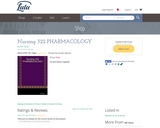
Textbook for Nursing Pharmacology written by MK Swain

Join Danny Rubin, founder of Rubin, and Stephanie Lemelle, an occupational therapist at Sentara Virginia Beach General Hospital, about the unpredictable yet meaningful world of an "OT." This conversation covers the day-to-day life of an occupational therapist, the variety of jobs in the industry, the power of communication skills and more. Students and teachers should also make use of the webinar worksheet at https://rubineducation.com/wp-content/uploads/2022/11/Rubin-Dream-Job-Webinar-Worksheet-Occupational-Therapist-November-2022.docx
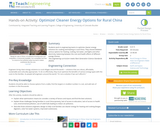
Students work in engineering teams to optimize cleaner energy solutions for cooking and heating in rural China. They choose between various options for heating, cooking, hot water, and lights and other electricity, balancing between the cost and health effects of different energy choices.

Featuring career information from April Flynn, Certified Dental and Orthodontic Assistant with Wilke Orthodontics.
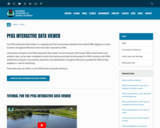
The PFAS Interactive Data Viewer is a mapping tool that incorporates datasets from several DNR programs to show locations throughout Wisconsin that have been impacted by PFAS.
Information included in the PFAS Interactive Data Viewer include locations with known PFAS contamination and whether clean up has been completed; results from testing municipal drinking water for PFAS; locations with PFAS-related fish and game consumption advisories; and waterbodies throughout Wisconsin sampled for PFAS during targeted or routine monitoring.
These data may not reflect current PFAS levels at specific locations.
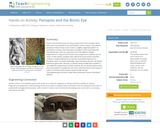
Vision is the primary sense of many animals and much is known about how vision is processed in the mammalian nervous system. One distinct property of the primary visual cortex is a highly organized pattern of sensitivity to location and orientation of objects in the visual field. But how did we learn this? An important tool is the ability to design experiments to map out the structure and response of a system such as vision. In this activity, students learn about the visual system and then conduct a model experiment to map the visual field response of a Panoptes robot. (In Greek mythology, Argus Panoptes was the "all-seeing" watchman giant with 100 eyes.) A simple activity modification enables a true black box experiment, in which students do not directly observe how the visual system is configured, and must match the input to the output in order to reconstruct the unseen system inside the box.
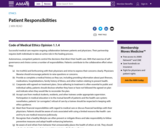
This is a publication from the American Medical Association(AMA) that educates students about the responsibilities they have as patients in our healthcare system in the U.S. For an activity, I would have your students read through each responsibility (a-j) and then form small groups and share 2 responsibilities each that they learned. The key takeaway is for the students to understand that it is not just the doctors and nurses that have responsibilities in our health system, we too as patients have our own obligations and responsibilities that we must abide by.

Join Danny Rubin, founder of Rubin, and guests Dr. Ryan Williams (pediatric neurologist) and Travis Fermil, RN to explore the world of medical careers. ASL provided. Students and teachers should also make use of the webinar worksheet at https://rubineducation.com/wp-content/uploads/2021/09/Rubin-Webinar-Worksheet-Q-and-A-about-Medical-Careers-September-2021.docx
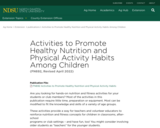
This resource is a publication from North Dakota State University that provides a list of activities that students can do that promote healthy eating choices and personal/physical wellness. For an activity with your students, choose one of the activities from the site and follow the link and instructions provided on the website. Each of these activities provide an interactive way for the students to learn about wellness and healthy choices.

Join Danny Rubin, founder of Rubin, and Maahi Subedi, a former pharmacy technician at CVS, for a deep dive into the job as a student or recent grad. Students and teachers should also make use of the webinar worksheet at https://rubineducation.com/wp-content/uploads/2022/10/Rubin-Dream-Job-Webinar-Worksheet-Pharmacy-Technician-October-2022.docx
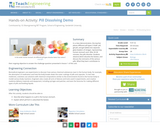
In a class demonstration, the teacher places different pill types ("chalk" pill, gel pill, and gel tablet) into separate glass beakers of vinegar, representing human stomach acid. After 20-30 minutes, the pills dissolve. Students observe which dissolve the fastest, and discuss the remnants of the various pills. What they learn contributes to their ongoing objective to answer the challenge question presented in lesson 1 of this unit.
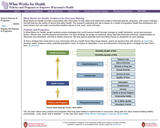
What Works for Health is a resource from the Population Health Institute at UW-Madison and provides communities with information to help select and implement evidence-informed policies, programs, and system changes that will improve the variety of factors that affect health. The research underlying this site is based on a model of population health that emphasizes the many factors that can make communities healthier places to live, learn, work, and play.
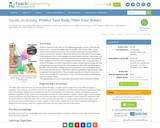
Students experience the steps of the engineering design process as they design solutions for a real-world problem that could affect their health. After a quick review of the treatment processes that municipal water goes through before it comes from the tap, they learn about the still-present measurable contamination of drinking water due to anthropogenic (human-made) chemicals. Substances such as prescription medication, pesticides and hormones are detected in the drinking water supplies of American and European metropolitan cities. Using chlorine as a proxy for estrogen and other drugs found in water, student groups design and test prototype devices that remove the contamination as efficiently and effectively as possible. They use plastic tubing and assorted materials such as activated carbon, cotton balls, felt and cloth to create filters with the capability to regulate water flow to optimize the cleaning effect. They use water quality test strips to assess their success and redesign for improvement. They conclude by writing comprehensive summary design reports.
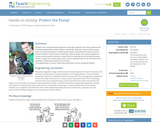
Students learn how biomedical engineers work with engineers and other professionals to develop dependable medical devices. Specifically, they learn about suction pumps, which are important devices to keep in good repair, especially when they are used in remote locations. Student teams brainstorm, sketch, design and create prototypes of suction pump protection devices to keep fluid from backing up and ruining the pump motors. Using a real suction pump, they conduct repeated trials to test their devices for reliability, making improvements as necessary.

Join Danny Rubin, founder of Rubin, and Dr. Stephanie Lachman, a veteran school psychologist in Las Vegas, Nevada, about the in-demand role of a psychologist for students ages 3-21. This conversation covers the day-to-day life of a school psychologist, the importance of mental health professionals, the power of communication skills and more. Students and teachers should also make use of the webinar worksheet at https://rubineducation.com/wp-content/uploads/2022/12/Rubin-Dream-Job-Webinar-Worksheet-Psychologist-December-2022.docx

Featuring career information from Sandra Hanmann, Radiologist at Bellin Hospital.
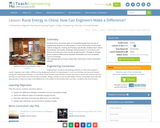
Students learn about five types of renewable energy that are part of engineering solutions to help people in rural communities use less and cleaner energy for cooking and heating. Specifically, students learn about the pollution and health challenges facing families in rural China, and they are introduced to the concept of optimization. Through an energy game, students differentiate between renewable and non-renewable sources of energy.
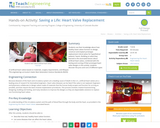
Students use their knowledge about how healthy heart valves function to design, construct and implant prototype replacement mitral valves for hypothetical patients' hearts. Building on what they learned in the associated lesson about artificial heart valves, combined with the testing and scoring of their prototype heart valve designs in this activity, students discover the pros and cons of different types of artificial heart valves based on materials, surgery requirements, and lifespan.